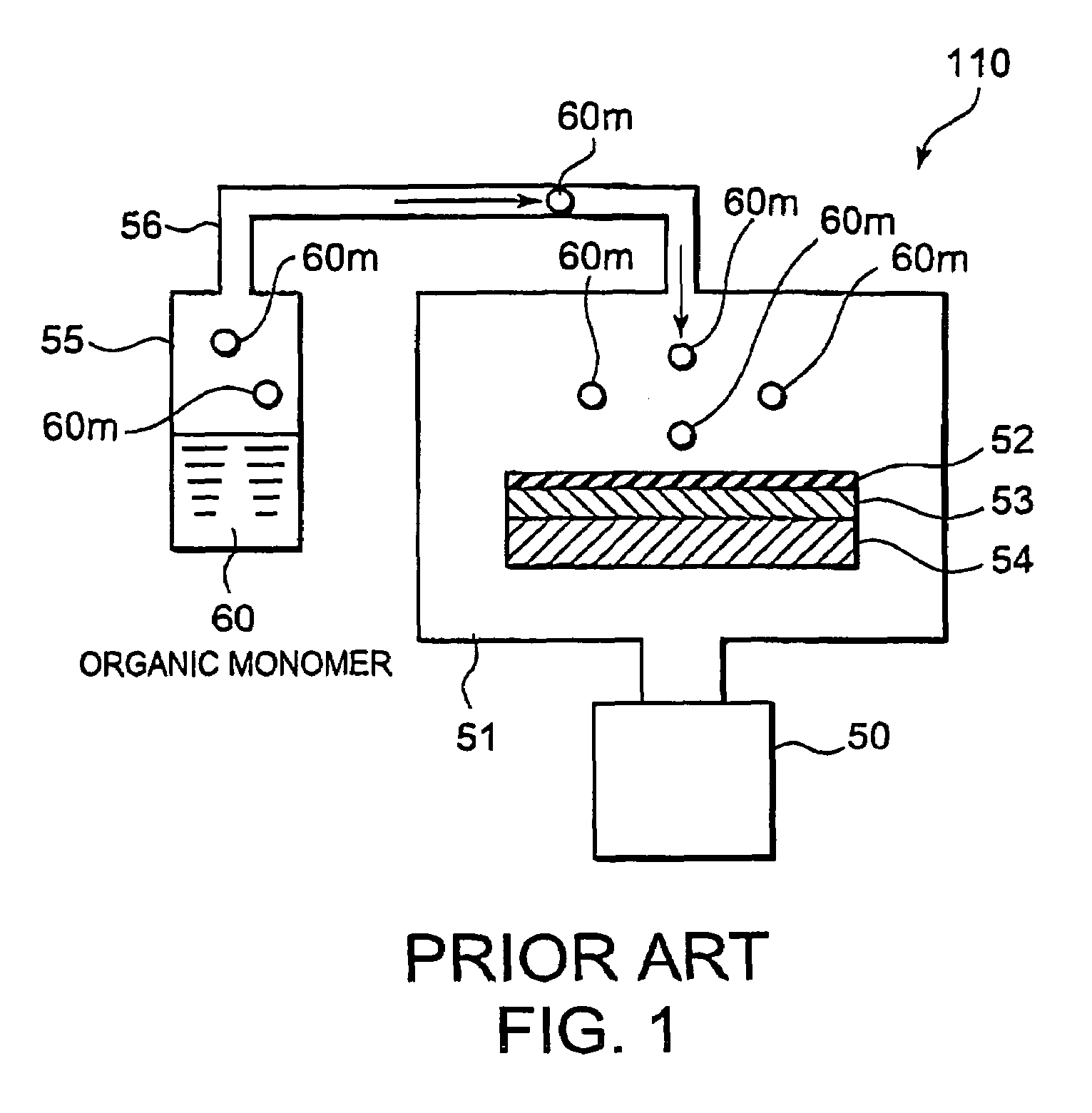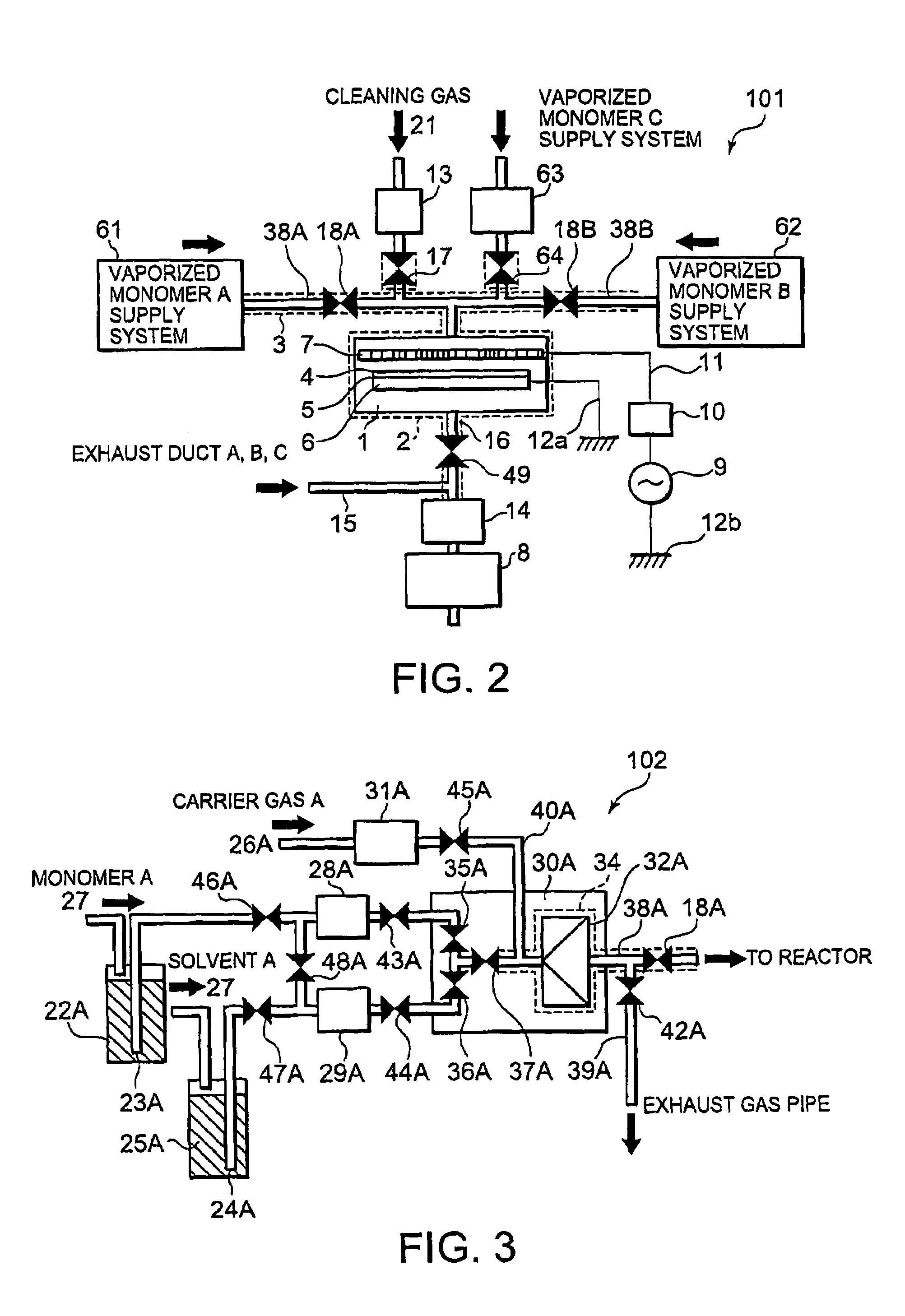Copolymerized high polymer film and method of manufacturing the same
a high-polymer film, copolymerization technology, applied in vacuum evaporation coating, organic chemistry, coatings, etc., can solve the problems of increasing affecting and deteriorating high-speed performance in the operation of integrated circuits. , to achieve the effect of reducing the relative permittivity of such polymer films
- Summary
- Abstract
- Description
- Claims
- Application Information
AI Technical Summary
Benefits of technology
Problems solved by technology
Method used
Image
Examples
example
[0097]As the organic monomer A using diisopropenyl benzene of Formula (I), stated above, as the organic polymer B using acetylene of Formula (II), stated above and as the organic monomer C using divinylsiloxane benzocyclobutene (DVS-BCB) of Formula (III), stated above, a series of the processes from the vaporized mixed gases to manufacturing of copolymerized high polymer films from diisopropenyl benzene, acetylene and DVS-BCB will be explained in detail hereunder, with the case of copolymerized high polymer film growing method taken as example shown in FIG. 2, together with the supply system shown in FIG. 3. In the following explanation, symbol A in FIG. 3 is omitted for the brevity sake.
[0098]At initial condition of the vaporization control apparatus of copolymerized high polymer film manufacturing facilities, a valve 18 and a valve 49 are set for “open”, the reaction Chamber 1, the exhaust pipe or tube 16, a waste liquid pipe 15, a vaporizing chamber 32 and a vaporized raw materia...
PUM
| Property | Measurement | Unit |
|---|---|---|
| relative permittivity | aaaaa | aaaaa |
| relative permittivity | aaaaa | aaaaa |
| vaporizing temperature | aaaaa | aaaaa |
Abstract
Description
Claims
Application Information
 Login to View More
Login to View More - R&D
- Intellectual Property
- Life Sciences
- Materials
- Tech Scout
- Unparalleled Data Quality
- Higher Quality Content
- 60% Fewer Hallucinations
Browse by: Latest US Patents, China's latest patents, Technical Efficacy Thesaurus, Application Domain, Technology Topic, Popular Technical Reports.
© 2025 PatSnap. All rights reserved.Legal|Privacy policy|Modern Slavery Act Transparency Statement|Sitemap|About US| Contact US: help@patsnap.com



